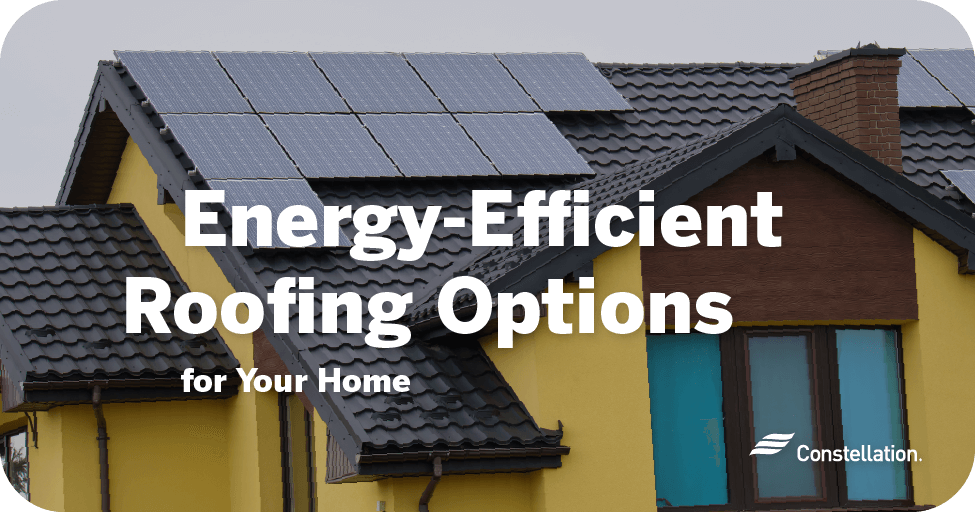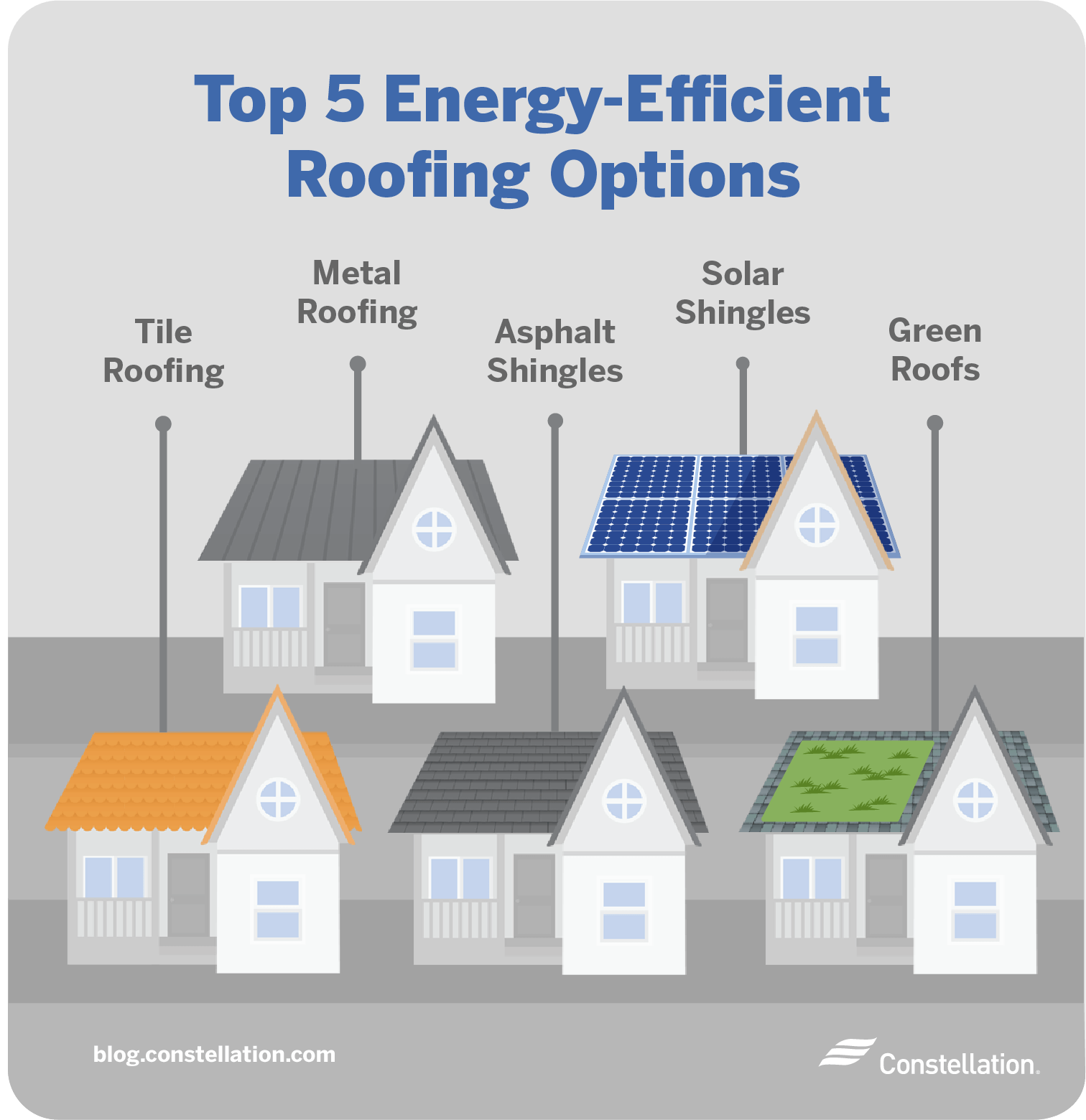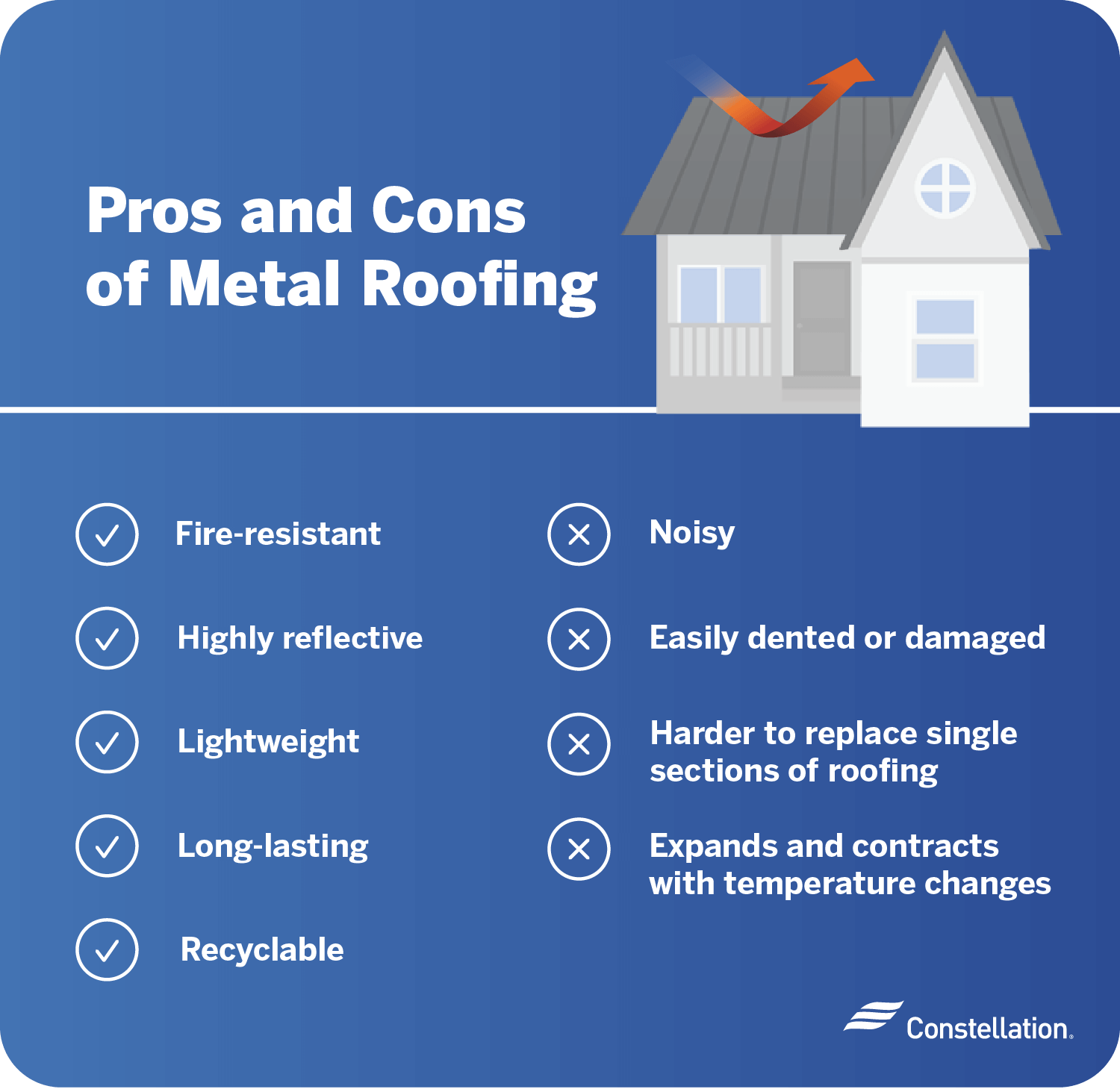
- Category:
Home Energy Savings -
Last updated:
July 6, 2022
Energy-Efficient Roofing Options for Your Home
There are lots of choices you must make as a homeowner. Some of these choices are small and easy to make, while others require some careful thought and research. For example, one of the larger decisions that a homeowner must make is which type of roofing to have installed on their home.
Whether you’re choosing an energy-efficient roof for a newly constructed home or upgrading your current roof with energy-efficient roofing materials, you’ll find that there are several types of residential roofs that can help you cut home energy consumption. Before making an investment, it’s best to weigh your options and consider the various factors that could influence your decision.
- What is considered energy-efficient roofing?
- Top 5 energy-efficient roofing options
- Other ways to make your roof more energy-efficient
- Finding the right energy-efficient roofing option for you
What is considered energy-efficient roofing?
For a roofing system to be considered energy-efficient, it has to reduce the energy consumption of the building or structure it covers. This is accomplished by reflecting sunlight, which reduces the need for air conditioning within the building, in turn conserving energy.
Each roofing material has a different level of energy efficiency, which is measured using the Solar Reflectance Index, or SRI. The SRI assesses a roof’s ability to reflect sunlight and release any heat that gets absorbed. An SRI rating is then assigned to the material, which is a single number between 0 and 100. The higher the SRI rating, the better the material is at reflecting heat and saving energy.
In order to be ENERGY STAR® certified, a low-sloped roof must have an initial SRI rating of at least 65 and an SRI rating of at least 50 after three years of use. Steep-sloped roofs have different specifications and are required to have at least 25 SRI initially and a minimum of 15 SRI after three years.
Common types of residential roofs and their SRI ratings
There are a number of energy-efficient roofing materials that are appropriate for residential properties, such as ENERGY STAR® shingles and metal roofing. Each of these roofing materials has a different SRI rating, meaning they vary in their ability to reflect heat. They also have a distinct look and set of features that may be best suited for a particular climate.
For example, certain types of energy-efficient roofing shingles are more effective in areas with cooler weather, while others are designed to withstand the heat of dry, sunny climates. In order to determine which type of residential roof would be most appropriate for your home, it’s important to consider each kind of energy-efficient roofing material, their SRI ratings, and the benefits they offer.
Top 5 energy-efficient roofing options that maximize savings

When it comes to choosing a new roof, it’s easy to feel overwhelmed by the number of options available. That’s why it helps to go into your search knowing which type of roof is the most energy-efficient. Keep reading to learn more about various types of residential roofs, what their SRI ratings are, and how they compare.
1. Tile roofing
Tile roofs are energy-efficient for several reasons, the first one being their design. When tile roofs are laid, the individual tiles overlap with one another, creating channels. These channels provide insulation and allow for increased air circulation, which improves efficiency. Additionally, tile roofs can be made from either concrete or clay, which are both effective at releasing any heat that gets absorbed.
The SRI rating for tile roofs will vary depending on factors such as the material that’s used, the color of the tiles, and the shape of the roof. For example, the average SRI value of a steep-sloped roof made from clay tiles ranges from 41-58 SRI, while steep-sloped roofs made from concrete tiles have an average rating of 14-72 SRI.
2. Metal roofing
There are plenty of options when it comes to metal roofing, with different shapes, substrates, and colors to choose from. Generally, metal roofs are made from either steel or aluminum, which are both well-suited for reflecting sunlight. Metal roofing is also one of the most sustainable roofing options, as the metal can be recycled and reused in new products.
When it comes to the SRI rating for metal roofs, the number will vary based on the metals that are used and the coatings that are applied. For example, a metal roof made from galvanized steel has an average rating of 46 SRI, whereas metal roofs made from aluminum have an average rating of 56 SRI. If a cool white coating is applied, the SRI value of a metal roof can increase to an average of 71-82 SRI.
Pros and cons of energy-efficient metal roofing

Metal is an energy-efficient roofing material that’s also known to be long-lasting, with an average lifespan of over 50 years. However, there are both pros and cons of metal roofing to take into consideration.
Pros of metal roofing:
- Fire-resistant
- Highly reflective
- Lightweight
- Long-lasting
- Recyclable
Cons of metal roofing:
- Noisy
- Easily dented or damaged
- Harder to replace single sections of roofing
- Expands and contracts with temperature changes
3. Asphalt shingles
Asphalt shingles are one of the most common types of residential roofs, likely due to their affordability. Though they’re traditionally not the most energy-efficient roofing option, some asphalt shingles are made with special reflective granules that limit heat absorption and promote sun reflection. When shopping for asphalt shingles, look for products that include these coated granules in order to improve your home’s efficiency.
As with other energy-efficient roofing materials, the SRI rating for asphalt shingles will vary based on several factors, such as their color and whether they feature reflective granules. That said, the average initial SRI rating for a steep-sloped roof made from asphalt shingles is between 16-32 SRI.
4. Solar shingles
Solar shingles help improve your home’s efficiency while generating energy in the process. Each shingle contains photovoltaic cells, the same ones used in traditional solar panels, that convert sunlight into electricity. Solar shingles tend to have higher upfront costs than other energy-efficient roofing materials, but you may be able to help offset these costs with incentives and tax credits.
When choosing solar shingles, you’ll want to take energy generating capacity into consideration. The amount of electricity that each shingle is able to produce will vary based on the brand and product, so be sure to look for one that’s capable of meeting your household’s energy needs.
5. Green roofs
A green roof is a layer of vegetation that’s planted on top of a building’s roof. There are also several other layers that must be installed in order to maintain the vegetation and protect the structure beneath. Green roofs promote both sustainability and energy efficiency, reducing air conditioning demand by over 75% in one study. They also offer other benefits, such as improving air quality and managing stormwater runoff.
Before investing in a green roof, there are a few important factors to consider. For one, you’ll want to make sure your house is structurally sound enough to handle the additional weight of a fully-saturated green roof. Green roofs also require more routine maintenance than other types of energy-saving roofs, particularly during the first five years following installation.
Other ways to make your roof more energy-efficient
With all the different options and variations available, it may take some time to determine which type of residential roof best meets your needs. If you’re not ready to upgrade to a new energy-saving roof yet, there are still ways you can improve your current roof’s efficiency:
- Add a cool roof coating. Cool roof coatings are thick, paint-like materials that are applied to certain types of roofs to help reflect sunlight and improve energy efficiency. They’re less expensive than purchasing a new roof and can be an especially good choice for low-sloped roofs.
- Improve your attic insulation. By upgrading to energy-efficient attic insulation, you can help prevent air from entering and exiting through your roof, in turn reducing the strain on your HVAC system.
- Install a heat recovery ventilator. Heat recovery ventilators, or HRVs, are systems designed to conserve energy while removing excess moisture and contaminants from the air in your home.
Find the right energy-efficient roofing option for you
Installing an energy-efficient roof is an effective way to save energy at home and may even help increase your property value. However, homeowners should always research their options when replacing a roof or building a new structure. Carefully consider your needs and look for ENERGY STAR® shingles and roofing materials to ensure you find the right roof for your home.




